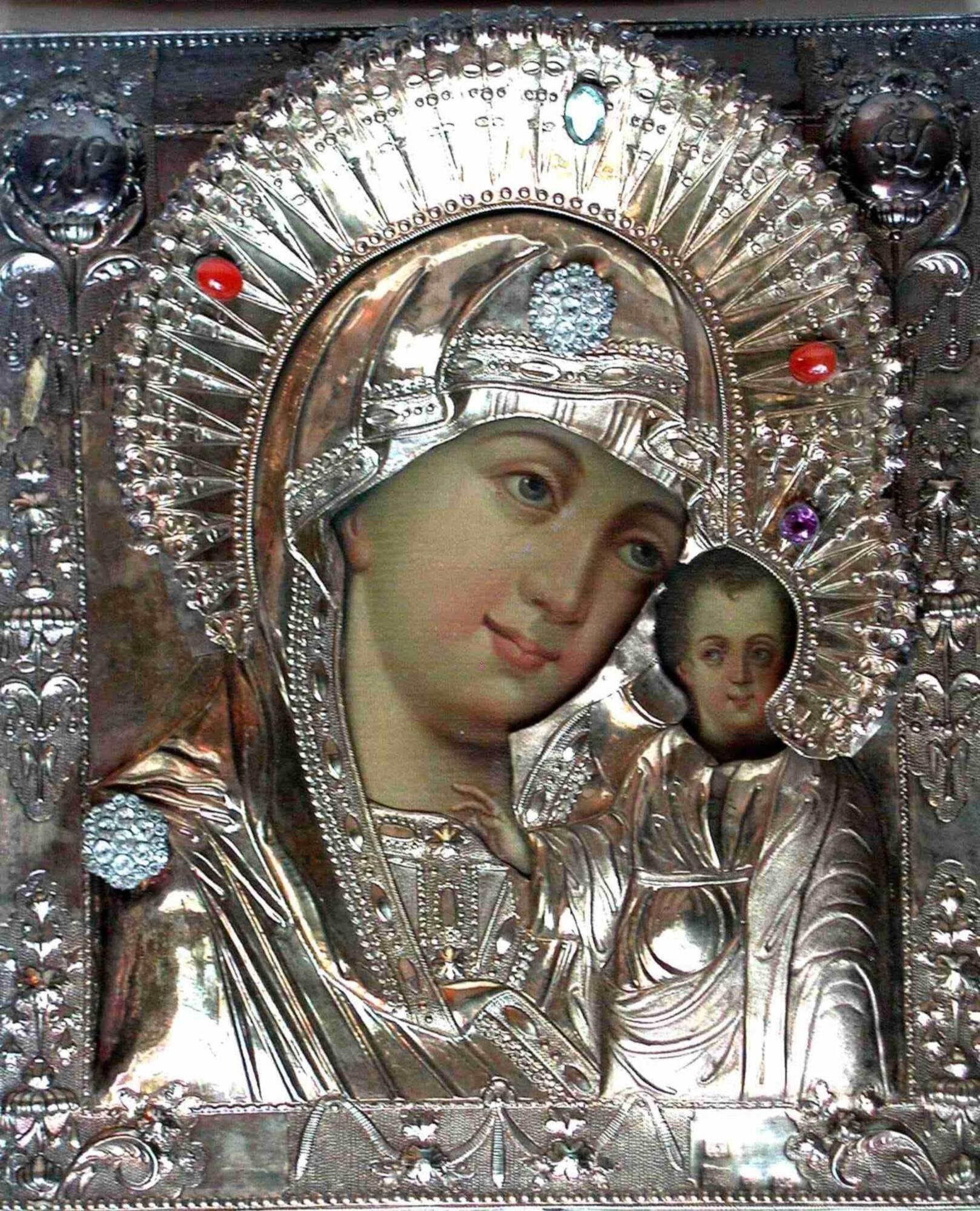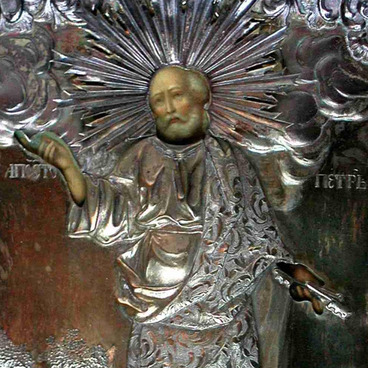Our Lady of Kazan is one of the most prized icons in Russia. The icon arrived in Moscow in 1612 with Kazan People’s Militia and remained in prince Pozharsky’s camp. The icon became an object of worship because people believed it was ‘Our Lady’s protection of its Kazan icon’ that helped free Moscow of the Poles. Later, in 1811, the famous icon was moved to the newly rebuilt Kazan Cathedral which later became a memorial in honor of the 1812 heroes. The icon itself was lost, but a lot of replicas have been preserved; icon painters still rely on them to paint Our Lady of Kazan icons.
The icon displayed here is the oldest of all surviving icons from the house in Klin. It’s hanging in the composer’s bedroom where we can also see Tchaikovsky’s desk where he created many of his renowned works.
We know the story of how Tchaikovsky came into possession of the icon from the book The Life of P. I. Tchaikovsky, written by his brother Modest, and it’s also linked to Vyatka. Pyotr Ilyich inherited it from his father’s cousin, Nadezhda Valtseva, whom the family called their auntie. Modest Tchaikovsky wrote this about her and other members of the household: ‘The oldest one, Nadezhda Timofeevna, was a distant relative of Ilya Petrovich who was spending the rest of her life in peace at his place. The hosts treated her with due respect, but the rest of the household were actually intimidated by the lady. She was especially harsh with the French girl… The reason for that was her jealousy of the two oldest boys, including Pyotr who was the heir of her single valuable possession — Our Lady of Kazan icon in a silver riza’. That was followed by a note: ‘P. I. loved and cherished it. It remains in Klin to this day’.
The icon’s riza was manufactured in Vyatka, as seen from the city stamp featured on the icon–a hand holding a bow with an arrow. We see this kind of stamp on items made in Vyatka between the 18th and the 19th century. The craftsman’s stamp ‘R. Yu.’ is featured on the back of the icon. It belonged to craftsman Roman Yurasov who worked in Vyatka from 1802 until 1828. The date ‘1806’ on the same stamp stands for the year of the riza’s manufacture. The designation of the standard is followed by the manufacturer’s stamp: the initials ‘A. M.’ inside a rectangle belonged to an unknown craftsman. It could have been Afanasy Makarov who worked in Vyatka from 1786 until 1802.
The icon displayed here is the oldest of all surviving icons from the house in Klin. It’s hanging in the composer’s bedroom where we can also see Tchaikovsky’s desk where he created many of his renowned works.
We know the story of how Tchaikovsky came into possession of the icon from the book The Life of P. I. Tchaikovsky, written by his brother Modest, and it’s also linked to Vyatka. Pyotr Ilyich inherited it from his father’s cousin, Nadezhda Valtseva, whom the family called their auntie. Modest Tchaikovsky wrote this about her and other members of the household: ‘The oldest one, Nadezhda Timofeevna, was a distant relative of Ilya Petrovich who was spending the rest of her life in peace at his place. The hosts treated her with due respect, but the rest of the household were actually intimidated by the lady. She was especially harsh with the French girl… The reason for that was her jealousy of the two oldest boys, including Pyotr who was the heir of her single valuable possession — Our Lady of Kazan icon in a silver riza’. That was followed by a note: ‘P. I. loved and cherished it. It remains in Klin to this day’.
The icon’s riza was manufactured in Vyatka, as seen from the city stamp featured on the icon–a hand holding a bow with an arrow. We see this kind of stamp on items made in Vyatka between the 18th and the 19th century. The craftsman’s stamp ‘R. Yu.’ is featured on the back of the icon. It belonged to craftsman Roman Yurasov who worked in Vyatka from 1802 until 1828. The date ‘1806’ on the same stamp stands for the year of the riza’s manufacture. The designation of the standard is followed by the manufacturer’s stamp: the initials ‘A. M.’ inside a rectangle belonged to an unknown craftsman. It could have been Afanasy Makarov who worked in Vyatka from 1786 until 1802.



